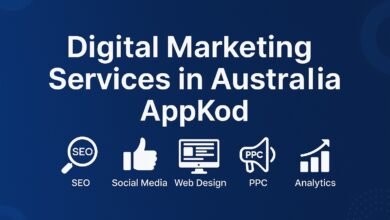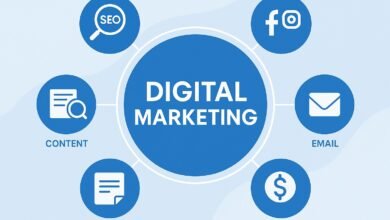How to Price a Freemium B2C SaaS: A Comprehensive Guide to Building an Effective Pricing Strategy

Introduction: Understanding Freemium Models for B2C SaaS
When developing a SaaS (Software as a Service) product for the B2C (Business to Consumer) market, one of the most crucial decisions you’ll make is how to price your product. A freemium model can be a game-changer, offering users access to a basic version of your service for free, while charging for premium features. However, finding the right balance between offering enough value in the free version and enticing users to upgrade can be tricky.
In this article, we will explore how to price a freemium B2C SaaS, providing you with the tools, strategies, and best practices to create a pricing model that both attracts users and drives revenue.
What is a Freemium Pricing Model?
Before diving into the specifics of pricing, it’s essential to understand what a freemium pricing model is. In a freemium B2C SaaS model, users can access a basic version of the software at no cost. However, there are often limitations, such as restricted access to features, fewer customization options, or limited usage. To unlock the full potential of the product, users are encouraged to upgrade to a premium version.
This model has been successfully used by companies like Dropbox, Spotify, and Evernote, who attract a large user base with their free tiers and convert a percentage of them into paying customers. The challenge, however, is ensuring that the free version is compelling enough to attract users, while the premium version offers enough value to make users want to pay.
Key Factors to Consider When Pricing a Freemium B2C SaaS
When determining how to price a freemium B2C SaaS, several factors must be taken into account. These factors will help you craft a pricing strategy that aligns with your business goals and meets customer expectations.
1. Understanding Your Target Audience
Knowing your target audience is crucial in determining what users are willing to pay for. B2C customers are often price-sensitive, so it’s essential to offer them enough value in the free version to hook them, but also create an irresistible incentive for them to upgrade.
You should also analyze their behaviors and preferences. Do they prioritize features like security, ease of use, or advanced functionalities? Understanding their pain points will help you decide which premium features are most likely to appeal to your customers.
2. Defining Core and Premium Features
One of the most important aspects of freemium pricing is defining the boundary between the free and premium tiers. The free version should provide enough value for users to experience the product’s core benefits, while leaving room for users to want more.
For instance, a photo editing app might offer basic editing features like cropping and filtering for free, but advanced features such as unlimited layers, premium filters, or high-resolution exports could be behind a paywall. You must decide which features will be restricted and which will be available for free.
3. Usage Limits and Restrictions
Setting clear usage limits is a powerful tactic in the freemium model. The free version should not be unlimited or overly generous, as this could dissuade users from upgrading.
Common restrictions include limits on the number of projects or files a user can store, the number of active users, or the duration of the free trial. These limits should be designed in such a way that users who experience the value of the product feel compelled to upgrade when they hit these limitations.
Structuring Your Pricing Tiers
Once you have defined your core and premium features and decided on usage limits, the next step is to structure your pricing tiers. A clear and understandable pricing structure can make all the difference in how users perceive your SaaS offering.
1. Free Tier
The free tier should be your primary tool for user acquisition. Make sure it’s easy to sign up for and provides enough value for users to get hooked. While you don’t want to offer everything for free, providing a taste of the product’s core functionalities will increase the chances that users will want to upgrade.
2. Premium Tiers
Your premium tiers should be priced in a way that reflects the value they offer over the free version. Many SaaS businesses use a tiered pricing model, where each tier provides increasing levels of access or additional features. For example:
-
Basic Plan: A low-cost option that unlocks more features than the free tier.
-
Pro Plan: A higher-cost plan with advanced features and more storage.
-
Enterprise Plan: A custom pricing plan for large companies requiring additional support and features.
By offering multiple pricing tiers, you can appeal to a wide range of customers, from individuals looking for a basic solution to large businesses in need of advanced tools.
Strategies to Increase Conversion Rates from Free to Paid
In a freemium model, the goal is to convert free users into paying customers. However, not all users will make the switch, so it’s essential to employ strategies that encourage upgrades.
1. Offer Time-Limited Trials
One of the most effective ways to entice free users into paying is by offering a time-limited free trial of premium features. For example, you might offer a 30-day trial of the full product, after which users are prompted to subscribe to continue enjoying the premium features. Time-limited trials create a sense of urgency and can help users see the value of the premium tier.
2. In-App Promotions
You can also use in-app notifications or email marketing to encourage free users to upgrade. Highlight the benefits of premium features and provide special offers, such as discounts or bonuses, for users who upgrade within a certain time frame.
3. Provide Value with Additional Content
Offering educational content, such as tutorials, webinars, or exclusive resources, can incentivize users to upgrade. This added value can make users feel they are not just paying for a product, but also gaining valuable knowledge and insights that enhance their experience.
Conclusion: Finding the Right Balance
Pricing a freemium B2C SaaS product requires a delicate balance. The free version must provide enough value to attract users while leaving them wanting more, and the premium version must offer compelling features that make users feel the cost is justified.
By defining your core features, setting reasonable limits, and structuring clear and appealing pricing tiers, you can create a model that attracts users and encourages them to convert to paying customers.
Remember, the key to a successful freemium model is not only how you price your product but also how you continue to engage and provide value to your users throughout their journey.



